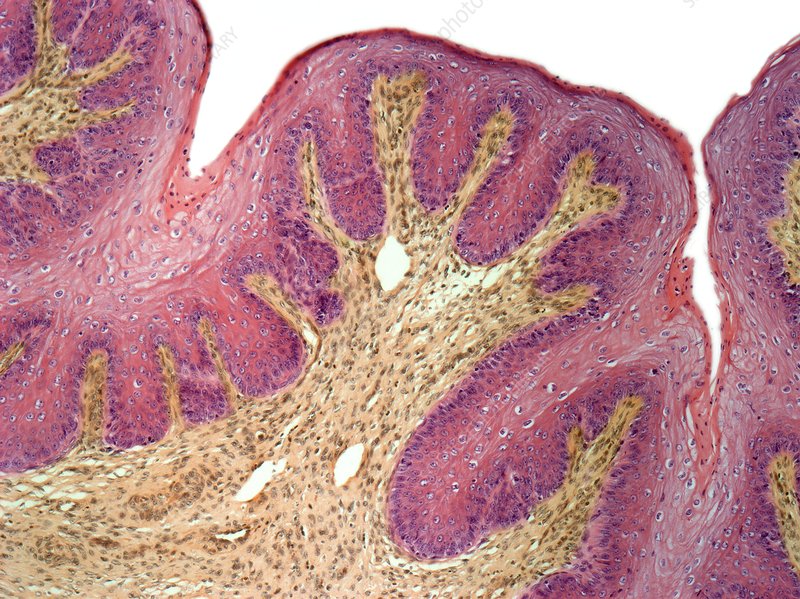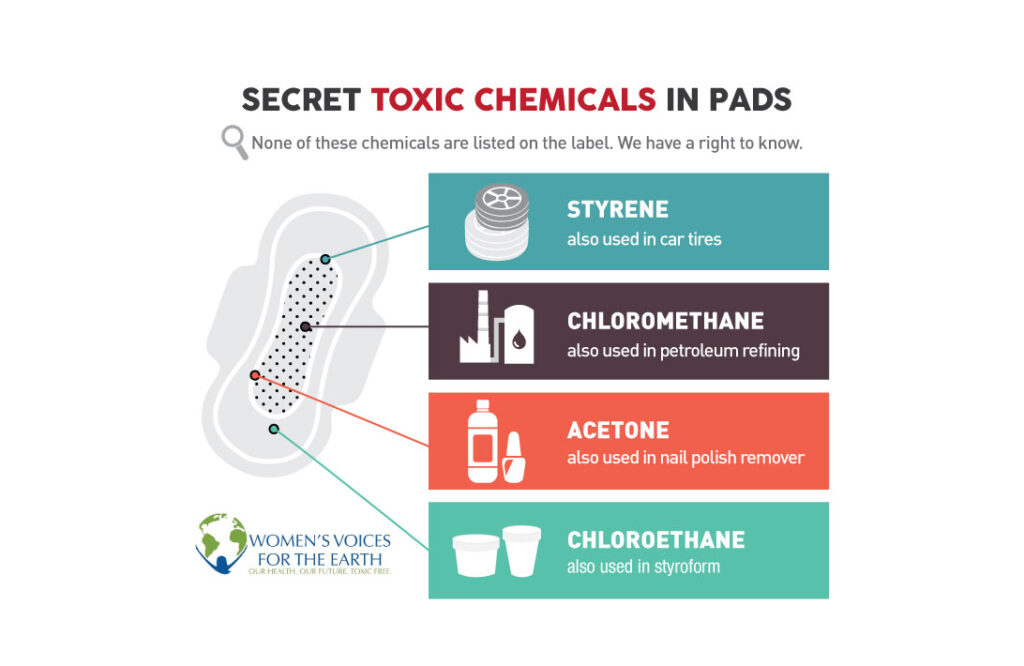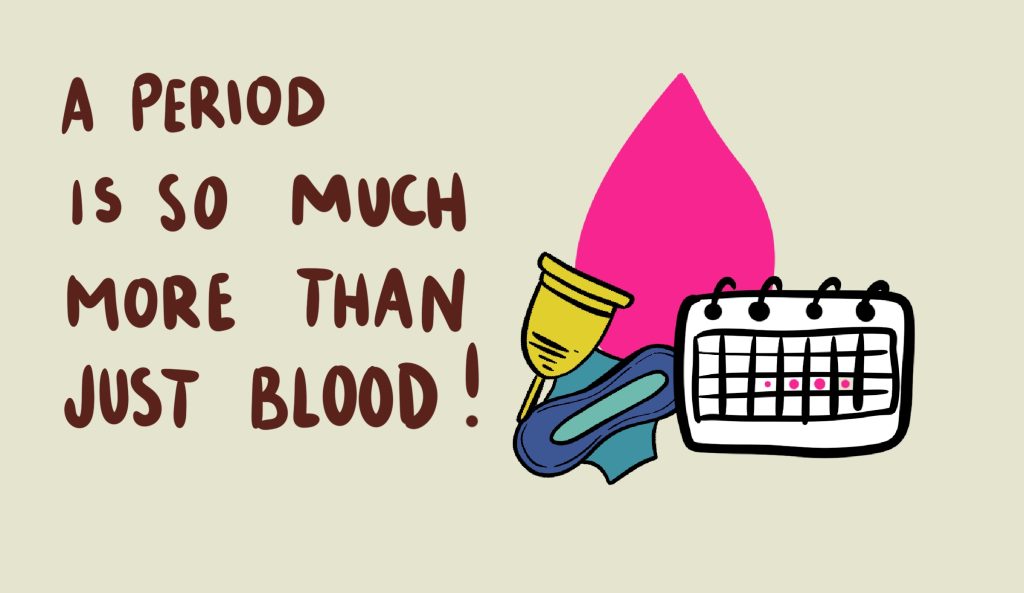The prevalence of toxic chemicals in today’s world is no longer a question…. from the food we eat and the cleaning products in our homes, to our medicine and makeup. It may come as a surprise to learn that they are also in our menstrual products, such as disposable pads and tampon.
How can pads harm users? Not all skins are created equal, and the qualities of vaginal skin make it particularly risky when it comes to exposure to chemicals.
Vaginal skin is uniquely absorptive
The skin is the body’s largest organ. We are well acquainted with some types of skin, like the skin on our arms and legs. This skin acts as a sort of waterproof layer and has low permeability.
In plain terms, we do not directly absorb what our arms, legs and hands come in contact with into our bloodstream. This is one of the fundamental differences between vaginal skin and other skin.
Vaginal skin is highly permeable, meaning it has pores or openings that allow liquid or gas to pass through it. The vagina has a “mucous membrane” which is rich in blood vessels and produces a mucous that protects against harmful microorganisms (men have one too, on the penis glans or head). Having a mucous membrane is extremely sensible when it comes to health – it allows the vagina to self-clean and stay healthy.
It is less ideal when it comes to toxic products and chemicals. Because, as a mucous membrane, it can both secrete and absorb fluids at far higher rates than other skin. Here, absorb is the key word.

A drug delivery route
In the medical world, this is not new knowledge. In 1918, using cats and dogs, Macht demonstrated that products administered vaginally can be quickly absorbed into the body and even, in the case of poisons, cause vomiting and death(1).
This method of drug administration was effective enough that Macht referred to the vagina as “a seat of absorption” and claimed it a “rational” practice in certain therapeutic settings. In 1999, another study found that vaginal application of a synthetic estrogen (a naturally occurring female sex hormone) resulted in blood serum levels 10 times higher than those who received the estrogen orally.
(1) Not to suggest that vagina’s are helpless, defenseless organs… first any substance must successfully cross the mucosa and epithelial layers. Once past these natural defenses, however, the molecules will be circulated around the body system.
This quality means that whatever the vagina comes into contact with can be directly absorbed in the bloodstream, where it is then circulated around the body.
This process of absorption circumvents the digestive process of our saliva and stomach which can help break down and flush chemicals from the body. In this way, as put by one doctor, “chemicals on your skin can be worse than eating them”.
Exposure to Toxic Chemicals over time
Once in the body, these chemicals can accumulate. Multiply this by the number of years a women menstruates and the number of pads and tampons they may use and it add ups to years of exposure. Are our pads and tampons the ticking time bomb they’ve been labelled?
Knowing the nature of vaginal skin and the implications for exposure, it is fundamentally important that users know what is in the products they buy – a right that is recognised when it comes to other items such as food.
However, by law, tampon and pad manufacturers do not need to disclose their “ingredients” as they are classified as “medical devices” and listed as luxury commodities. As a result, many individuals remain ignorant of the raw materials that the pads are made of and the risks they pose.
Ingredients in Disposable Pads
An experiment undertaken by Naturallysavvy.com – comparison between burning an ingredients undisclosed Always pad VS a 100% organic pad
In the absence of disclosure, menstrual activists have undertaken testing in more creative ways. Take author and nutritionist Andrea Donsky for example, who compared burning a 100% organic cotton pad with an Always pad, manufactured by Proctor & Gamble. In the video, the organic pad burns slowly leaving very little sooty residue. In contrast, the undisclosed ingredients of the Always pad burn with a thick black smoke and leave considerable residue, indicating it may contain dioxins, synthetic fibers and petrochemical additives.
Efforts are still being made in the US, South Korea and UK to garner support from legislators requiring large manufacturing corporations to fully disclose ingredients. In India, volunteer-led organisation Green the Red is taking up menstrual product disclosure issues with pro-bono lawyers. Too often, however, disclosure is not recognised as a priority by governments.
Harmful for Women’s Health
In 2014, US based organisation Women’s Voices for the Earth undertook laboratory testing of “Always” menstrual pads. The eye-opening findings concluded that these pads “emit toxic chemicals and reproductive and developmental toxins” – none of which were disclosed on the product by the manufacturer. This data is the first publicly available information on these types of products.
These toxic chemicals, only some of which are pictured below, have been linked to cancer, reproductive harm, hormone disruptive and allergic reactions.
Disposable sanitary pad manufacturing companies such as P&G, have historically stated that these chemicals are commonly found in the environment and fall within “safe exposure limits”, though the very concept of safe exposure is highly debatable when it comes to vaginal skin. In the words of Ami Zota of George Washington University, it would be more accurate to question “to what extent have we been underestimating exposures because we haven’t been accounting for this unique exposure route?”
Add to this list, residual pesticides, synthetic fragrances and odor neutralisers, plastic chemicals and dioxins, and it concocts an alarming chemical cocktail. For more information on the synthetic products and chemicals in conventional menstrual products, check out article by Eco Femme titled “Disposable menstrual products – Convenience at what cost?”
Safe and Healthy Menstrual Products
There are, of course, safer menstrual products of which the pros and cons have been well summarised by The Logical Indian.
Here are the facts to take away:
- What we put in and on vaginas can affect overall health. Vaginal skin is uniquely and highly absorptive. What it comes in contact with can be directly absorbed into the bloodstream and circulated around the body.
- Menstrual and hygiene products such as pads and tampons are a source of chemical exposure.
- To date, manufacturers of these products are not required to disclose ingredients. Testing by individuals and organisations has shown the presence of harmful substances and chemicals.
- Chemicals found include residual pesticides, plastic chemicals and dioxins. These toxic chemicals have been linked to cancer, reproductive harm, hormone disruptive and allergic reactions.
The general thumb rule: if it is sustainable and safe for the environment, it is equally safe for us!
Healthy and sustainable menstrual practices include menstrual cups and washable cloth pads.
A collaborative article by Project UGER (Udaipur, Rajasthan) and Eco Femme (Auroville, Tamil Nadu) as part of the ‘Unlearning Menstruation’ series.








Comment (1)